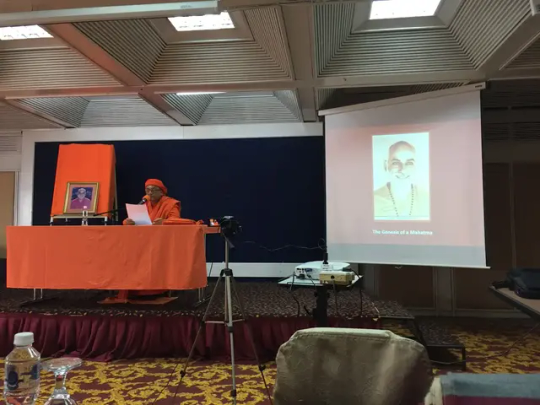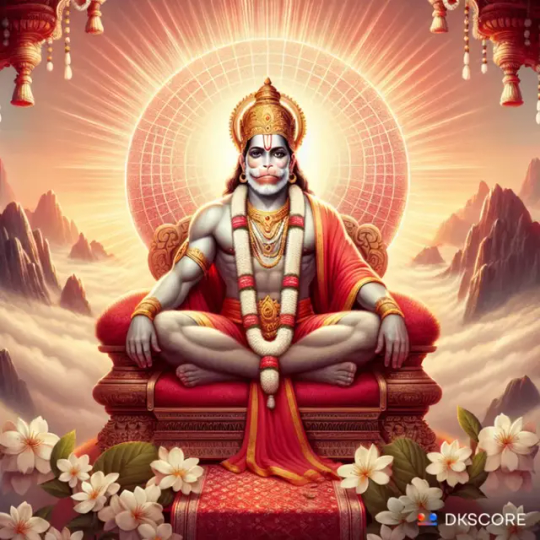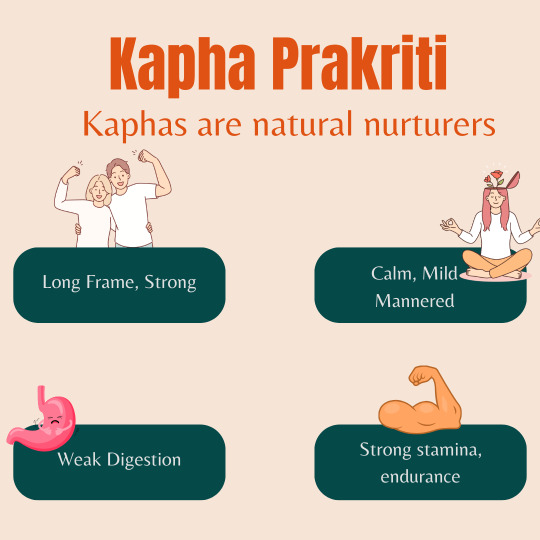#prakriti
Explore tagged Tumblr posts
Text

सर्वमंगल मांगल्ये शिवे सर्वार्थ साधिके।
शरण्ये त्र्यंबके गौरी नारायणि नमोस्तुते॥
हे नारायणी! तुम सब प्रकार का मंगल प्रदान करने वाली मंगल मयी हो। कल्याण दायिनी शिवा हो। सब पुरुषार्थो को (धर्म, अर्थ, काम, मोक्ष को) सिद्ध करने वाली हो। शरणागत वत्सला, तीन नेत्रों वाली एवं गौरी हो। हे नारायणी, तुम्हें नमस्कार है।
II शुभ नवरात्रि II
-------------------------------------------------------
Navaratri is celebration of Shakti. A celebration of Prakriti.
We pray to her to bestow health and wellness on us, which she does in several ways. It is vibrant and spiritually significant festival and is celebrated with immense enthusiasm and fervour across India.
Happy Navratri Everyone.
#navratri#durgapuja#maadurga#goddess durga#maa#shakti#prakriti#jaimatadi#mother#motherhood#mother has arrived#hinduism#sanatani#sanatandharma
23 notes
·
View notes
Text







- personification of TIME
- search for the eternal
- birth-life-death-rebirth cycles of Nature
vs
- transcendence of TIME through enlightenment/liberation
- the Sun & seasons (rebirth of the Son)
#consciousness#Varuna#spiritual#presence#seasons#cycles#Prakriti#spirituality#rebirth#divinemother#awareness#nonduality#heart#selfrealization#advaita#Kali
3 notes
·
View notes
Text
purusha and prakriti
In an age long since past, where time and space danced the eternal waltz of existence, nestled in a cosmos teeming with celestial expanse, was a tiny planet. This was Earth, a planet known for its extraordinary vigor, beauty, and lush life. It was here Prakriti danced - a wonder of creation, the material cosmos personified.
Prakriti, in all her grandeur, was the Seen, an enigmatic entity of braided pulsars, clustered galaxies, and swirling neon nebulae. She was the ocean's depth and the mountain's height, she was both the raging tornado and the softest snowflake. Her dance was the seasons and the stars, life and death, creation and decay. In her cosmic ballet, she was everything - and yet, unseen.
Who could appreciate her infinite dance, her celestial choreography? Her cosmic prevalence was too sacred and subtle to be understood by the untrained eye, and thus, unperceived she remained, dancing through the cosmic maelstrom, yearning a worthy observer.
Then there came Purusha, the Seer. He was unlike any other, an entity rare and trustworthy who came from the silence that existed between thought and action. Removing the veils of ignorance and illusions, he sought to comprehend the profound dance of Prakriti, the cosmic spectacle that lay before his transcendental sight.
Purusha watched, and as he did, he realized his fortunate position. Before him danced the Universe, her beauty unparalleled, her dance dazzling. His gaze was unwavering, his reverence sincere. He silently vowed to honor the dance, to see it not with mortal eyes but with a pure, unblemished soul.
The dance of Prakriti continued, flowing through galaxies and echoing through time. And Purusha, with devoted admiration, beheld the dance, a rare and worthy audience. A sacred bond formed between the Seen and the Seer, a communion as old as time itself.
And thus, the dance of the cosmos continued, observed by the Seer, through him acquiring value and through him being understood. But it was also through the Seen that the Seer found his purpose. Theirs was a dance of mutual existence, a dance of unity.
In the end, Purusha and Prakriti together unveiled a cosmic truth: the dance of the cosmos indeed exists, ever-vibrant and divine, but it is in the perception of this dance where its beauty unfurls, where its significance arises, and where its divine freak dances.
And so unraveled the dance of the Seen and the Seer, an eternal ballet played out in the theatre of the cosmos, a tale of divinity not oft told but forever resonating in the inscrutable infinity of space and time. The harmonious duality of Purusha and Prakriti, the Seer and the Seen, continued to weave their timeless tale across the fabric of existence. Their story is an eternal reminder of the sacred dance of life - a dance not to be flaunted but revered with utter reverence and devotion. Theirs is our story, the universe's story, a cosmic rhythm pulsating through the veins of existence.
3 notes
·
View notes
Text
Beyond The Big Bang: The Extraordinary Hindu Creation Story Scientists Are Now Studying
Introduction In the vast universe of Hindu cosmology, the story of creation unfolds like a magnificent cosmic drama spanning trillions of years. Unlike the simplistic “big bang” theory of modern science, Hindu creation mythology presents an intricate, purposeful process orchestrated by divine forces. This ancient wisdom describes a cyclical universe with multiple dimensions, where creation isn’t…
#ancient wisdom#cosmic origins#cosmology#creation story#divine creation#Hindu cosmology#Hindu gods#Hindu mythology#Hindu Philosophy#Lord Brahma#Lord Brahma creation#Lord Vishnu#Lord Vishnu creation#Mahabharata#Nine phases of creation#prakriti#Puranas#Purusha#spiritual knowledge#Three forms of Vishnu#Vedic knowledge
0 notes
Text

We are born of prakriti. If prakriti demonstrates paropakara everywhere (trees, rivers, cloud, cows, etc.), should we not also demonstrate the same paropakara in our life? We can have lasting well-being only when we live in harmony with Nature.
Swami Nirviseshananda Tirtha
Click here to watch a short video 'Everything in Creation is prompted by Prakriti': https://www.bhoomananda.org/videos/104-bhagavad-gita-swami-bhoomananda-tirtha-everything-in-creation-is-prompted-by-prakriti/
#nutanswamiji#globalsatsang#narayanashramatapovanam#bhoomanandafoundation#spirituality#spiritualquotes#spiritualwisdom#Spiritualseeking#spiritualpursuit#prakriti
0 notes
Text
1 note
·
View note
Text

Radha Krishna.
#hinduism#krishna#hindu mythology#mythical lovers#a.i.#mount meru#artificial intelligence#radha#a.i. art#radha krishna#a.i. generated#shakti#avatar#lakshmi#krishnaism#Prakṛti#jainism#Prakriti
1 note
·
View note
Text

Gaia spins on, silently contemplating what it means to be born into a sarcastic universe.
David Brin
0 notes
Text
The Profound Significance of Hanuman Ashtak: A Vedic Astrology Perspective
he Hanuman Ashtak also known as Sankat Mochan Hanuman Ashtak, is a revered hymn dedicated to Lord Hanuman, composed by the great saint Goswami Tulsidas, the author of Ramcharitmanas. This sacred hymn is a powerful tool for overcoming obstacles and invoking the divine blessings of Lord Hanuman, Read more hanuman Ashtak >>

#hanuman#ashtak#Ramcharitmanas#Tulsidas#sankatmochan#lordshiva#rudraavtar#lanka#spiritual#sanjeevani#prakriti#ram#lakshmana#jaishreeram#sindur#tilak#hanumanchalisa#growth#life#astrology#aiastrology#vedicastrology#astrologysoftware#astrologypost#astrologyposts#astrological#dkscore#astrologycrm#jyotish#jyotishmedium
1 note
·
View note
Text

#Is Goddess Durga addressed as Ashtangai#Prakriti#Sanatani#Tridev Janani in our holy scriptures?माँ_को_खुश_करनेकेलिए पढ़ें ज्ञान गंगाSUB
0 notes
Text
The Five Ingredients of the Moment: Insights from Bhaktivedanta Vana Maharaja (2011)
In 2011, Bhaktivedanta Vana Maharaja shared a powerful idea about what makes up a moment. He explained that a moment isn't just something that happens by chance or because of our actions. Instead, it's shaped by five key elements: Ishvara (God), Jiva (the soul), Prakriti (nature), Kala (time), and Karma (the outcomes of our past actions). This view shows us how each moment is a complex mix of these factors, each playing a crucial role in life's unfolding story.
Ishvara: The Supreme Guide
At the heart of this interplay is Ishvara, the divine force behind all creation and order. Ishvara's will is absolute, making Him the ultimate authority over everything that happens. He is like the director of a movie, controlling the overall direction while also allowing the other elements some freedom to play their parts.
Jiva: The Living Soul
Next, we have Jiva, the living soul. This spark of awareness is all about consciousness and desire. Through its desires, Jiva interacts with the world, making choices and moving through life based on what it wants.
Prakriti: The Force of Nature
Prakriti, or nature, brings in the qualities of the gunas: sattva, rajas, and tamas. These qualities influence every situation, with sattva bringing lightness and joy, rajas adding energy and passion, and tamas introducing a heavy, dark presence. Prakriti shapes the environment and affects how things unfold.
Kala: The Dimension of Time
Kala refers to time, the framework that ensures not everything happens all at once. It's about finding the right moment for actions and events, showing that timing is key for everything to come together properly.
Karma: The Results of Our Actions
Finally, Karma represents the effects of our actions. What we've done in the past influences our present and future, in ways that are not always straightforward. Karma teaches us that our actions have consequences, often returning to us in unexpected forms.
To sum up, a moment is far from simple; it's a dynamic combination of Ishvara, Jiva, Prakriti, Kala, and Karma. Understanding these elements gives us a deeper insight into how life works, revealing the intricate connections between our actions, the world around us, and the timing of every event.
0 notes
Text
Purāṇa : The Age-Old Ancient Story Telling Technique
– Dr. Dhananjay B. Ghare Introduction: ‘Śaunaka’ group of sages carried out a ‘yāga’ for global welfare. ‘Sūta’ alias ‘Romaharśaṇa’ a wandering monk, expert in telling spiritually symbolic stories in romantic hair-raising style and famous as ‘Purāṇika’, frequently visited them. Some families in Maharashtra and north Karnataka area have ‘Purāṇika’ as their surnames, most probably because their…

View On WordPress
#Atharvaveda#Bhakti#Brahma#Chāturvarṇāśrama#Culture#Dharma#Gita#Krishna#Milkyway#Philosophy#Prakriti#purana#Purusha#Rigveda#Shiva#Shrimadbhagwatam#Tamas#Thermodynamics#Universe#Upanishad#Vedas#Vedic#Vedopaṇiśadic#Vishnu#Vyasa#Yajurveda#Śaunaka
0 notes
Text

Kapha Prakriti Characteristics
#ayurveda canada#gut health#healthy lifestyle#ayurveda#knowayurveda#kapha#prakriti#kaphatraits#personalitytraits#bestayurvedanearme#ayurvedaclinicnearme#ayurvedaforhealth
1 note
·
View note
Text
Verse 13.1 - Ksetra Ksetrajna Vibhaaga Yoga
अर्जुन उवाच
प्रकृतिं पुरुषं चैव क्षेत्रं क्षेत्रज्ञमेव च।
एतद्वेदितुमिच्छामि ज्ञानं ज्ञेयं च केशव।।13.1।।
Arjun said:
O Keshav, I wish to understand what are prakṛiti and puruṣh, and what are kṣhetra and kṣhetrajña? I also wish to know what is true knowledge, and what is the goal of this knowledge?
The meaning of this verse is that Arjun is asking Krishna to explain the fundamental concepts of Vedanta, such as the nature of matter and spirit, the field and the knower of the field, the knowledge and the object of knowledge. He wants to know the essence of reality and the purpose of life.
The verse implies that Arjun is seeking the highest wisdom that can liberate him from the cycle of birth and death. He is not satisfied with the conventional knowledge of the scriptures, rituals, ethics, or morality. He wants to know the direct and immediate experience of the Self and the Supreme.
The verse also shows that Arjun is humble and eager to learn from Krishna, who is the Supreme teacher and the embodiment of the Absolute Truth. He addresses Krishna as Keshav, which means the one who has beautiful hair, but also the one who is the master of the senses and the lord of creation.
Similar verses from Vedic texts are:
- Yogavashishta 10.7
अहं च त्वं च विश्वं च विश्वस्य च परं पदम्।
एकं चैतन्यमात्रं हि विभाति विविधं यथा।।
I, you, and the universe, and the Supreme State of the universe, are nothing but one Pure Consciousness, shining in various ways.
This verse expresses the non-dual vision of reality, where the individual Self, the other, the world, and the Supreme Self are all manifestations of the same Consciousness. There is no difference or distinction between them, except in appearance.
- Ishavasya Upanishad 1
ईशावास्यमिदं सर्वं यत्किञ्च जगत्यां जगत्।
तेन त्यक्तेन भुञ्जीथा मा गृधः कस्यस्विद्धनम्।।
All this, whatever moves in this moving world, is enveloped by God. Therefore, renounce and enjoy; do not covet anyone's wealth.
This verse teaches the attitude of detachment and contentment, based on the recognition of God as the innermost Reality of everything. It advises to renounce the sense of ownership and attachment, and to enjoy the gifts of God without greed or envy.
- Mundaka Upanishad 1.1.3
स निश्चयेन योक्तव्यो योगोऽनिर्विण्णचेतसा।सङ्कल्पप्रभवान्कामांस्त्यक्त्वा सर्वानशेषतः।।
One should practice yoga with firm conviction and unwavering mind. Having renounced all desires born of imagination, completely.
This verse instructs the aspirant to practice yoga, which is the union of the individual Self with the Supreme Self, with determination and perseverance. It also warns against the distractions of the mind, which create various desires and attachments, and urges to renounce them totally.
1 note
·
View note
Text
Vivekananda, Tesla, and the Meeting of Dharm & Science: Unveiling the Ultimate Truth
Introduction The meeting of Swami Vivekananda and Nikola Tesla represents a pivotal moment where Eastern philosophy and Western science intersected. Their intellectual exchange left a lasting impact, influencing Tesla’s scientific perspective and drawing intriguing parallels between Vedantic concepts and modern physics. This article explores their meeting, Tesla’s vision of a connected universe,…
#america#brahma#consciousness#cosmology#dharm#dharm and science#did nikola tesla believe in hinduism#hinduism#Hinduism and quantum physics#History#how did vivekananda influence nikola tesla#india#Nikola Tesla#nikola tesla vedanta#Philosophy#prakriti#prakriti and purush#purush#quantum physics#religion#science#Spirituality#tesla#tesla and cosmic energy#tesla coil#vedanta#vivekananda#vivekananda and nikola tesla#vivekananda science#vivekananda tesla letters
0 notes
